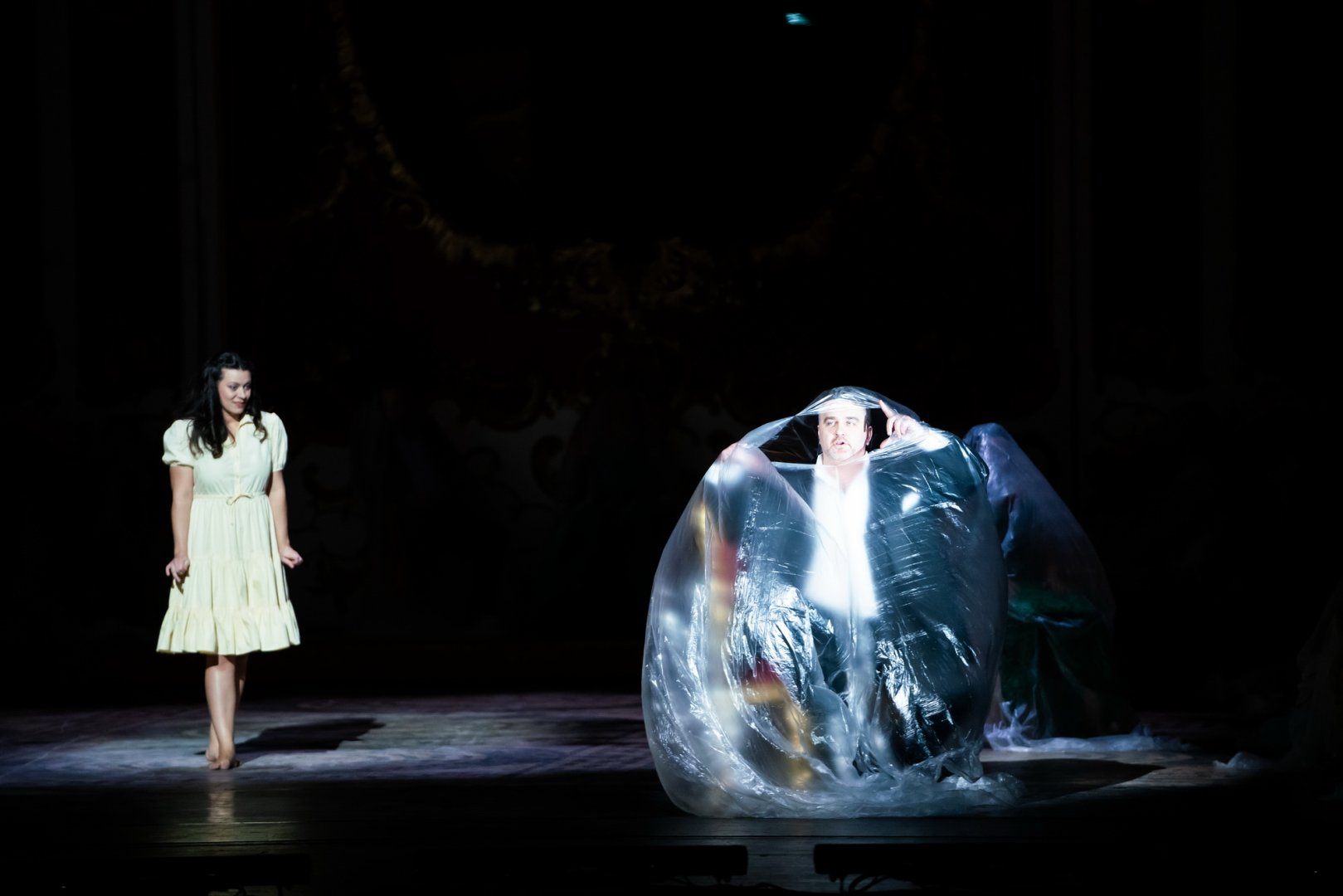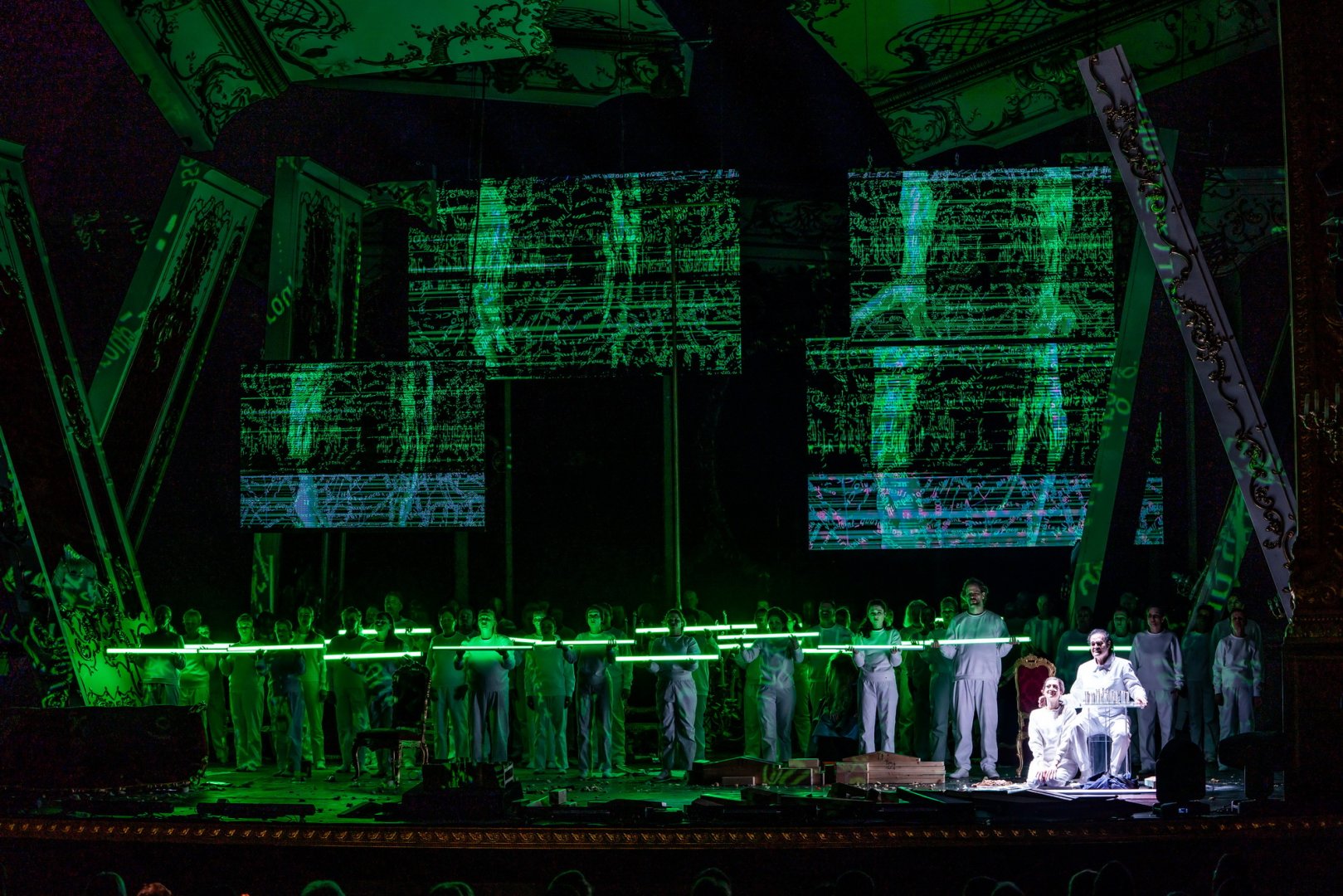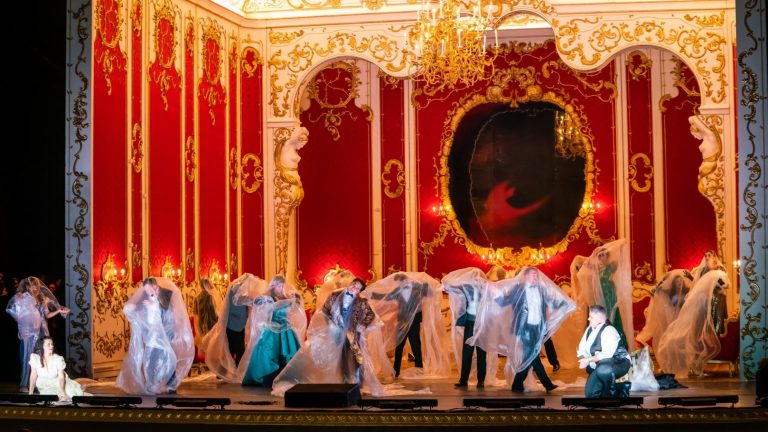The Hungarian State Opera’s closing performance of Sergei Prokofiev’s monumental score and Leo Tolstoy’s historical novel “War and Peace” took place on 18 February. This production, which made its Hungarian premiere on 28 January, was a collaboration with Grand Théâtre de Genève and is 13 scenes (the longest of all of its many versions) in two acts. While the musical aspects were impeccable, the visual aspects were an odd mixed bag of mixed messages, while at the same time a curious juxtaposition of 1812 and 2023.
The composer’s gigantic score (28 lead singers and extra-large chorus) for a gigantic subject – the War of 1812 wherein Napoleon marched his men into battle to overtake Moscow — is in itself a mixed musical map of the Russian empire more than 200 years before Prokofiev wrote it (composed during the Second World War). It encompasses hymns of praise for the Motherland, Prokofiev’s defiance of the musical mores espoused by the Stalinist regime, and an ominous soundtrack to the ideological miasma happening then that is happening now.
Prokofiev’s messaging was clear: though he still needed to appease the Stalinists with a modicum of tonality, he was still able to express his outrage through careful musical dissonance at the real horrors of a real war that had just consumed thousands of Russian troops, and all the while keeping the soul of Mother Russia close to everyone’s heart.
Director Calixto Bieito, whose previous decades in the opera world is rife with inflammatory imagery, has conscripted here an older messaging style redolent of a recent era that has fallen into a deserved extinction. Bieito and costume designer Ingo Krügler chose to encase most of the leads and a few of the chorus members in body-sized plastic bags (over their ballgowns and tuxedos) from which they were trying to fight their way out. That symbolism feels obvious, but soon after — and furthering the insane asylum atmosphere — the assigned body language resembled people on hallucinatory drugs continuously slugging imaginary foes and popping balloons. The incessant arm-waving activity went on for almost 2.5 hours of the first act.

Despite these challenges, the singers were quite spectacular: notably Andrea Brassói-Jőrös in the demanding role as Natasha; Csaba Szegedi as the lovelorn Andrei; Szabolcs Brickner as the hapless romantic Pierre; and Péter Fried as the glorious General Kutuzov among the many other central characters who were just as outstanding. (A singer to watch for in the future was in a minor role as Matryosha: ruby-voiced Lusine Sahakyan.) The chorus was astonishing throughout.
Conceptual paradigms
Bieito and Olga Paliakova staged the entire opera in a luxurious ballroom, resembling the Winter Palace in St. Petersburg. At the center of the back wall a video screen shaped like an antique mirror gave us fleeting forewarnings. At one point during Act I – “Peace,” an extended video clip of a large bear running through frigid fields foreshadows the future for Russian troops, as Napoleon’s intentions are divulged to everyone by the scene’s end.
As the opera opened Act II – “War,” a huge chorus sang a long patriotic salvo to fire up the troops: “Little by little, the enemy has sparked an outrage in the Russian people.” Meanwhile, the ballroom came apart at the seams into diagonally suspended wall sections, and the atmosphere reflected wartime misery through the lens of a decadent society trapped inside while simultaneously acting out what was going on in the battlefields. The singers transformed furniture into shelters, horses, and barricades and mimed the bloody chaos while singing. The background flock was in the midst of destroying everything around them as well as themselves – one committed a grisly suicide on the front of the stage. The sounds of the pervading battles and bombs accompanied the dismantling and burning of the city.
In the program notes, dramaturg Beate Breidenbach writes that Bieito “was interested in a different kind of war, not the one where two hostile nations face each other. His production shows a society fighting an invisible enemy … in an absurd, grotesque, unintentionally comic, childish way.” Her final queries: “Order? Safety? Utopia? Or death?” suggest an inherent consent to allow humanity to regress into a completely infantile state, which is what we saw onstage. This, on the other hand, is where Bieito actually does capture the sociological zeitgeist of 2023: a Satan’s Ball fantasy, as witnessed in the last Grammy presentation.

I believe there are plenty of directors who could cook up more effective metaphors than plastic wrap, balloons, and mindless arm-waving for actors to delineate society’s disintegration. Bieito’s metaphors direct our brains into another zone – the zone of sleazy, neurotic voyeurism – instead of a compassionate and believable acknowledgment of how fear distorts, poisons and divides people.
The last chapter of this production turned into a bizarre remake of any ‘regie’ opera production in Stuttgart in the early 80s. The use of neon or fluorescent light batons, blindingly white costumes for everyone – in this case, lockdown-era sweatpants – and video screens showing green static, sucked all the historical authenticity out of the plot and swooped us into Jedi fantasyland.
The majestic victory chorus at the end was the merciful vocal salvation for us and for production. Conductors Alan Buribayev and Gábor Csiki deserve kudos for their outstanding orchestral and choral direction, respectively.











